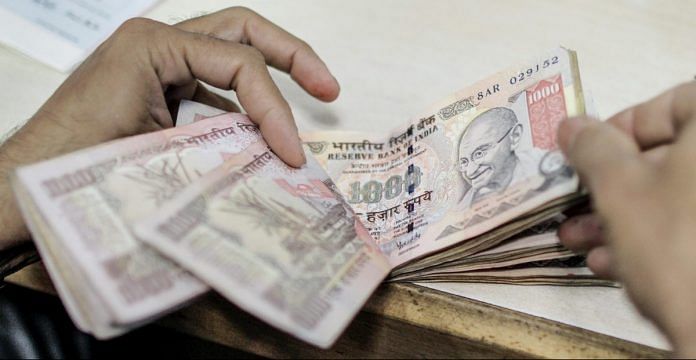Months after demonetisation, cash injection efforts still sluggish, experts warn it could affect economy.
New Delhi: More than 18 months after demonetisation, efforts by the Reserve Bank of India and the Modi government to improve and ease cash circulation have been stymied by logistic problems and a lack of policy clarity.
While the recalibration of ATMs to dispense Rs 200 notes is far from over, the Modi government, well-placed sources said, has decided to give the proposal to re-introduce Rs 1,000 notes a quiet burial.
“It is not easy to start circulating new denomination currency notes frequently as the money supply situation needs to be maintained besides facing challenges of distribution and circulation of those notes,” a bank official said referring to questions about the Rs 1,000 note.
The RBI did not respond to questions emailed by The Print.
It has been 10 months since the Rs 200 notes were introduced but in the absence of any official figure, estimates over how many ATMs can dispense the new denomination currency notes vary.
Though the finance ministry and the Reserve Bank of India (RBI) have asked banks to take necessary steps to recalibrate ATMs in a phased manner so that they can start dispensing the Rs 200 notes, sources in the banking industry said that the exercise has not been given due priority. The exercise, they added, has been undertaken in a haphazard manner.
Sources in cash logistics companies said that less than 30,000 of the 2.2 lakh cash vending machines have been recalibrated to dispense the Rs 200 notes. There have, however, been reports earlier suggesting that the number is about 50,000.
Sluggish cash flow
Cash logistics firms and several banks underline the need to make currency notes of Rs 200 available at ATMs for seamless cash supply and circulation.
“Until ATMs are recalibrated to dispense Rs 200 currency notes cash circulation will remain a cause for concern and this is creating problems for people, especially in the smaller towns and those falling under the small and mid-income category,” said an industry source, who has been handling the ATM recalibration exercise.
The Rs 200 note was introduced in August last year to help people in their day-to-day transactions. But the ATMs often, over a year-and-a-half since the demonetisation exercise, dispense only Rs 2,000 currency notes. “This makes cash circulation sluggish and it is not healthy for the economy,” a senior banker, who did not wish to be identified, said.
A large section of analysts and bankers also say high-value denomination notes of Rs 2,000 should be made available over the counter only at bank branches, a move that will discourage people from hoarding.
The currency notes of Rs 200 were launched following Prime Minister Narendra Modi’s decision on 8 November 2016 to scrap all high-value currency notes of Rs 500 and Rs 1000. The RBI, in a statement, said that it will ramp up printing and production of Rs 200 currency notes.
An estimated Rs 17.98 lakh crore of cash was in circulation before demonetisation.







On a day when people are recalling the emergency, seeking to stoke long forgotten resentments, it would be instructive to recall the more recent financial emergency of demonetisation, the immense damage it caused to the economy, the human suffering. We still do not know why it was ordered, what purposes it has served, what lessons have been learnt.